30 F. high in the Twin Cities Friday.
26 F. average high on December 19.
28 F. high on December 19, 2013.
December 19, 1989: Hard pressed to find snow cover in Minnesota. Only good places to cross country ski are at Grand Marais and along the Gunflint Trail.
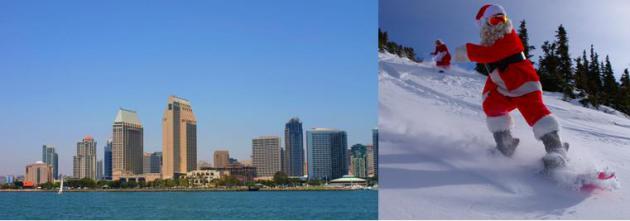
Beautifully Boring
I guess it’s human nature to assume the grass is greener elsewhere, to want what you don’t have. My youngest son is a Naval Academy grad. He flies helicopters for the Navy, training with the 5th Fleet in San Diego. Yeah, that San Diego, the city with the best climate in the USA.
He’s coming home for Christmas and he can’t wait to see snow again. “Dad, it’s boring out here. Every day is the same. I miss the seasons, the lakes, the people.”
Really?
I’d like to be bored for a year or two, just to sample that sensation.
The approach of colder air will set off a series of storms in the coming weeks. An inch or two of slush is possible Tuesday; just enough to (possibly) qualify as a white Christmas. A major Christmas Eve storm out east dumps out mostly rain, but heavy snow pinwheels into the Great Lakes and New England Christmas Day. I expect dry weather and 20s here on December 25, but latest ECMWF guidance spins up a major storm late next week. I could see a plowable snowfall next Friday into early Saturday, followed by a few subzero lows as we welcome a numbing New Year.
All I want for Christmas is El Nino. That, and a 3-day weekend in San Diego might cure what ails me.
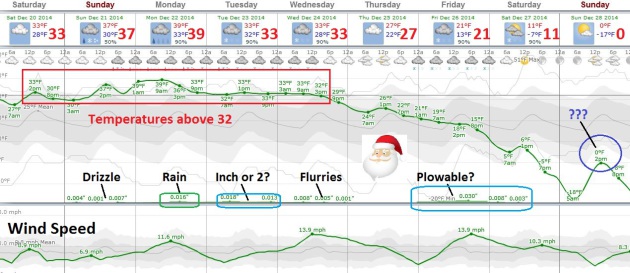
Pre-Christmas Thaw. A Real Storm Next Friday? Temperatures stay at or above 32F from this afternoon into much of Wednesday before tumbling late next week. European guidance is hinting at subzero lows by the end of next week, maybe a few days with highs in single digits by the end of December. Drizzle Sunday gives way to a cold rain Monday, possibly ending as an inch or two of snow Tuesday. I don’t see any travel problems close to home Christmas Eve or Christmas Day, but next Friday may be a subtle (yet blunt) reminder that winter is still very much alive and well. Graph: Weatherspark.

Christmas Eve Coastal Storm. ECMWF (European) guidance shows an impressive storm wrapping up near Detroit by midday next Wednesday, Christmas Eve, with a trailing front pushing impressive volumes of Atlantic moisture into the east coast and New England. The atmosphere will be warm enough for rain from Boston and New York southward to Raleigh, but winds will be strong and I could see delays at many airports out east. Snowy headaches are possible from the eastern suburbs of Chicago to Detroit, Indianapolis, Columbs and Louisville on the cold, backside of this powerful storm. Map: WSI Corporation.
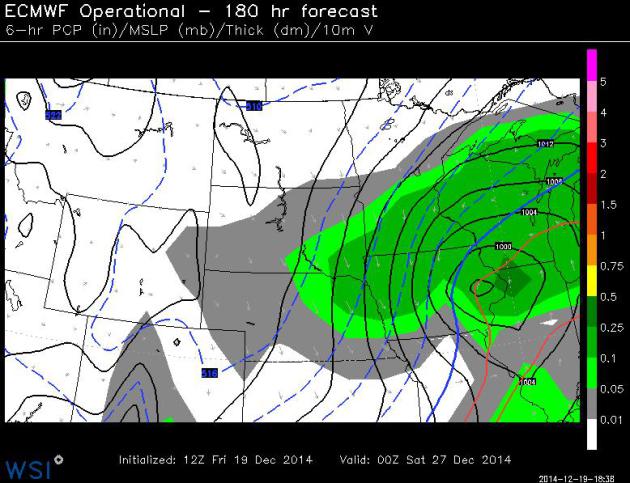
Hold The Presses – A Real Storm Next Friday? It’s too early to get too excited, but the latest run of the ECMWF takes a storm south of Minnesota, pushing from near Des Moines to the Quad Cities and Milwaukee, a potential storm track that favors significant snow for the Twin Cities. What can go wrong between now and then? Plenty. But make an entry in your diary: it may actually snow enough to shovel and plow next Friday. Map: WSI.
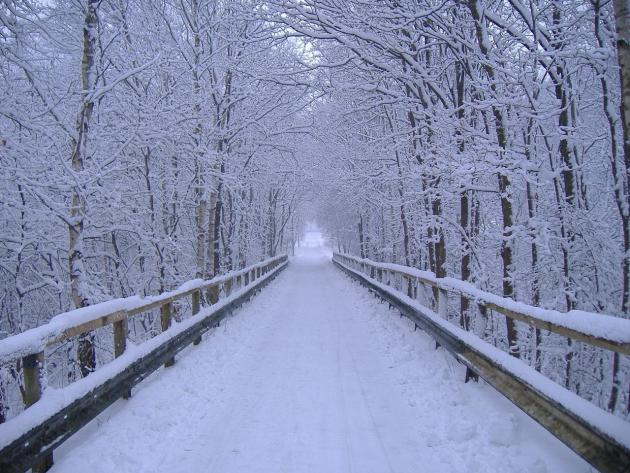
Roller Coaster Temperatures in December. Here’s an excerpt of this week’s WeatherTalk Newsletter with Dr. Mark Seeley: “…After starting the month with many sub-zero F temperature readings around the state during the first week, including a national low of -12 F at Embarrass on the 6th, many Minnesota observers reported 11-12 consecutive days with above normal temperatures and several new daily record warm minimum values and record daily warm maximum values were set over the 13th to the 15th. In addition MSP set a new all-time record high dewpoint for so late in the month with a reading of 49 F on the 15th, that corresponds to the average dewpoint for early June or mid-September…”

Nature’s Own Tornado Detector Saves Migrating Birds, Study Finds. Is it possible (some) birds can detect the faint vibrations of a distant tornado, one that’s hundreds of miles away? I wouldn’t rule anything out after reading this story at tucson.com: “…The data showed that five of his recently returned golden-winged warblers fled their Appalachian Mountain breeding ground and winged back to the Gulf of Mexico a day or two ahead of a massive thunderstorm cell that would later spawn 84 tornadoes and kill at least 35 people. Streby, a National Science Foundation visiting research scholar at the University of California, Berkeley, thinks the birds may have been reacting to very low-frequency sound waves produced by the distant, approaching storm, according to a study published online Thursday in the journal Current Biology…”
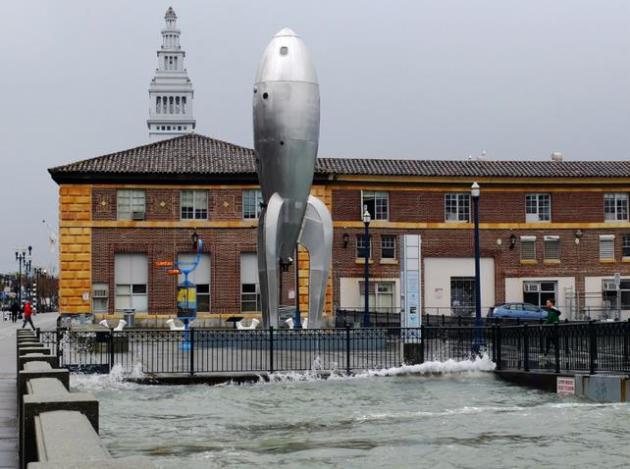
Tipping Point Nears For “Emerging Flooding Crisis”. Sea levels are rising, that’s not a computer model, that’s reality, with is increasing the frequency of tide and storm-related coastal flooding, as reported at Climate Central – here’s an excerpt: “…Flooding has already become 10 times more likely in Baltimore and Honolulu and five times more likely in Philadelphia, Norfolk, Va., and Charleston, S.C., since 1930. That’s in large part because since the start of the 20th century, sea levels have risen by about 8 inches globally due to human greenhouse gas emissions that have caused oceans to warm and land ice to melt, swelling the seas. “It’s an emerging flooding crisis,” William Sweet, an oceanographer with NOAA who led the new report, said…”
Photo credit above: “Flooding on San Francisco’s Embarcadero during the 2012 King Tide.” Credit: Sergio Ruiz/Flickr.
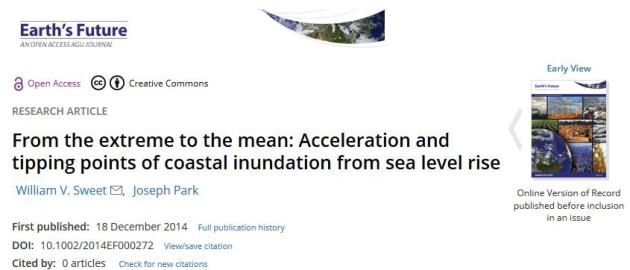
From The Extreme To The Mean: Acceleration and Tipping Points of Coastal Inundation from Sea Level Rise. A link to the research referenced above is here.
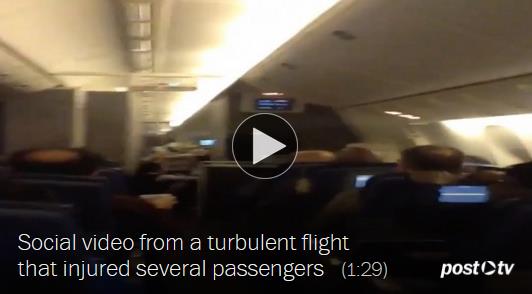
Heart-Pounding Video Documents American Airlines Flight Turbulence. The home video is troubling, a vivid reminder of why you always want to have your seat belt fastened when you’re in a metallic tube traveling at 500+ mph. Here’s a clip from The Washington Post: “Video of the American Airlines flight that was rocked by severe turbulence on Tuesday will make your heart skip a beat, and might even convince you to keep your seat belt fastened snug on your next plane trip. American Airlines flight 280, which was on its way from South Korea to Dallas, Texas, was diverted to Tokyo on Tuesday after plane-jarring turbulence injured several people, some of whom were later hospitalized for injuries that were not life-threatening..”

The Sony Hackers Are Terrorists. Sony’s corporate security was thought to be average, and if it can happen to them, it can happen to pretty much any company out there today. Here’s an excerpt from a story at Slate: “…This is the real story. Sony Pictures’ systems were not just compromised but obliterated, with the company now sent back to what’s comparably the technological Stone Age. Because of the centrality of IT infrastructure to every aspect of a company’s functions, it’s not even clear whether Sony has the ability to pay people accurately at the moment, as its payroll system has been reportedly destroyed…”
Photo credit above: AP Photo/Eugene Hoshiko, File.

The Lesson of the Sony Hack: We Should All Jump to the “Erasable Internet”. Are we moving toward the Snapchat Internet? At this point nothing would surprise me; here’s an excerpt from The New York Times: “…Because here’s the thing about the digital world that we must remember. Nothing you say in any form mediated through digital technology — absolutely nothing at all — is guaranteed to stay private. Before you type anything, just think: How will this look when it gets out? What will Angelina Jolie think if she finds out about this? If Angelina won’t like it, don’t send it. Because Angelina will find out. So will the rest of the world…”

Deloitte’s Amsterdam HQ Becomes World’s Most Sustainable Office Building. Gizmag has the details; here’s a clip: “…The building’s south façade is covered with solar panels on all surfaces that aren’t windows. In order to generate enough electricity to meet its level of consumption, though, developers OVG partnered with the University of Amsterdam and the Amsterdam University of Applied Sciences to install a further 4,100 sq m (44,100 sq ft) of solar panels on the rooftops of the schools. The heating and cooling of the building is catered for in part by orienting it to benefit passively from the path of the sun and also by using an aquifer thermal energy storage system…”

The 33 Craziest Fast Foods of 2014. As Buzzfeed rightfully points out, “pray for humanity”.
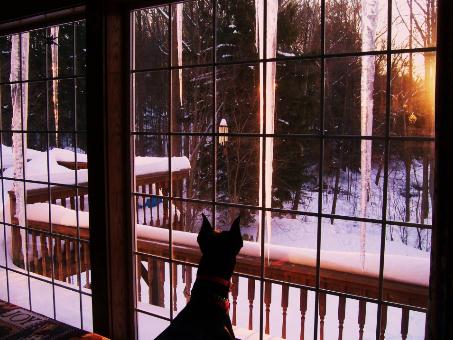
TODAY: Cloudy with patchy fog. Winds: South 5-10. High: 33
SATURDAY NIGHT: Clouds and fog. Low: 30
SUNDAY: Fog and drizzle. Another thaw. High: 37
MONDAY: Mostly rain – wet roads. Light mix by Monday night. Wake-up: 33. High: 38
TUESDAY: Inch or two of snow? Cooling off. Wake-up: 31. High: 33
CHRISTMAS EVE: Cold wind, flurries. Risk of Santa late. Wake-up: 23. High: 29
CHRISTMAS DAY: Dry & quiet. Few peeks of sun. Wake-up: 18. High: 27
FRIDAY: Potentially plowable snow event? Wake-up: 22. High: 23 (falling)
Climate Stories….
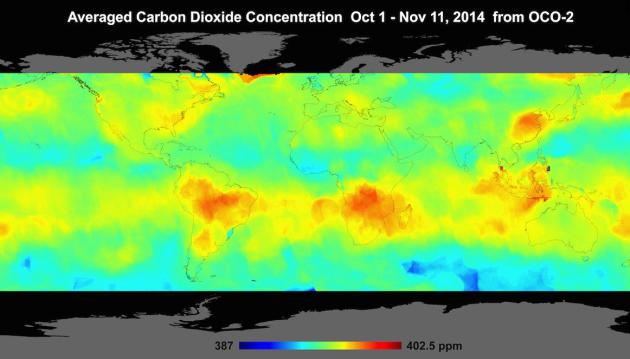
NASA Reveals What Carbon Dioxide Looks Like From Space. Meteorologist Andrew Freedman has the article for Mashable; here’s the intro: “NASA revealed the first-ever images of the global atmospheric concentration of carbon dioxide, the key long-lived global warming gas. The imagery, taken over the course of three months, reveals details about springtime biomass being burned in the Southern Hemisphere, as well as photosynthesis from plants worldwide. The data comes from a new NASA satellite known as the Orbiting Carbon Observatory-2 (OCO-2) that was launched on July 2 of this year…”
Image credit above: “Global atmospheric carbon dioxide concentrations from Oct. 1 through Nov. 11, as recorded by NASA’s Orbiting Carbon Observatory-2. Brighter colors show high CO2 concentrations.” Image: NASA JPL.

Op-Ed: Flood, Drought Risks Must Be Managed, With Or Without Climate Change. Here’s an excerpt of an Op-Ed at The Los Angeles Times: “…Climate change is increasing the risks of future droughts and floods. The sea will continue to rise, increasing flood risk along the East Coast, perhaps made worse by intensifying hurricanes. And the best science indicates that California’s wet season will become shorter and sharper. Spring drying will be exacerbated as more water is lost to evaporation into a warmer atmosphere and less is stored as winter snow…”
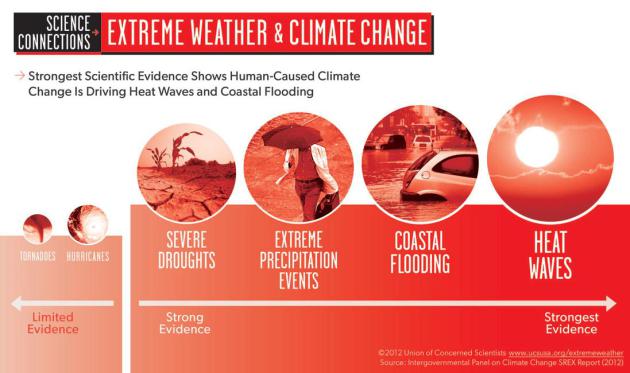
EPA Chief: Extreme Weather Boosting Climate Change Plan. Some Americans may still be skeptical of a man-made component to climate change, but there’s little doubt that the frequency and intensity of the extremes is increasing over time. Here’s an excerpt from USA TODAY: “Extreme weather events from typhoons to heat waves are helping make the case to Americans on the need to address climate change, the head of the EPA says, although opposition from congressional Republicans to the Obama administration’s ambitious plan remains unrelenting. “You have fires; you have droughts,” Environmental Protection Agency Administrator Gina McCarthy said in an interview with Capital Download. “People may not call it climate change,” but they feel the consequences from changing weather patterns, including on the economy. “This is about their own jobs, their own health, their own kids…”
Graphic above: Union of Concerned Scientists.

The People Have Spoken: This Is The Most Brazen Lie of 2014. ThinkProgress has the post; here’s the introduction: “Earlier this year, readers of the Tampa Bay Times’ fact-checking project PolitiFact were asked to vote on what they believe was the year’s biggest lie. And as of Wednesday, the results are in: “Climate change is a hoax” was the overwhelming choice. Over nine other options, almost 32 percent of the PolitiFact’s 14,467 poll voters chose the “hoax” claim, which was the title of a video released this summer by failed congressional candidate Lenar Whitney...”
Photo credit above: “Sen. James Inhofe (R-OK), one of Congress’ most outspoken climate deniers, has often claimed that global warming is a hoax.” CREDIT: Office of Senator Jim Inhofe.
* The Pulitzer Prize-winning PolitiFact article at Tampa Bay Times is here.
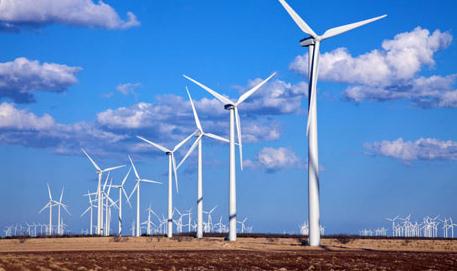
How Germany Banishes Climate Myths. CNN has the video and story – here’s an excerpt that caught my eye: “…Of course, doubts remain. Yet 15 years after we launched our “Energiewende” — the move away from an energy supply based on fossil and nuclear fuels — the economic impact has been broadly extremely positive: Renewable energy sources now account for nearly 30% of our electricity demands, and by 2050, our energy supply will be based almost completely on renewable sources. Indeed, the boom in environmental technologies is one of the reasons Germany made it through the economic crisis relatively unscathed...”

